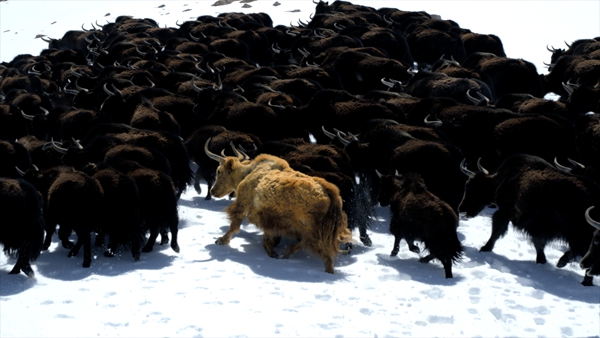Viewing nature at its best
By Xu Fan | China Daily | Updated: 2022-11-28 08:07

From Bryde's whales swimming in the sea along the Guangxi Zhuang autonomous region to migrating naked carp in the salty Qinghai Lake, the documentary has snapped a lot of intriguing wildlife moments.
An episode showing the Tibet autonomous region records how brown bears prepare for winter and black-necked cranes undergo their annual migration between March and April. In another story, featuring Hubei province, members of a family of golden snub-nosed monkeys are seen huddling together to get warm on a snowy branch in the Shennongjia Forestry District. The photography team also encountered three wild golden yaks — or one-hundredth of the species' total population in the world — running with a herd of common yaks on the Tibetan plateau.
"China has endeavored to protect endangered wildlife species and their habitats in recent years. With the improved biological environment, we are surprised and happy to find that it has become much easier to spot rare species in the wild," says Yu.
Taking Tibetan antelopes as an example, the director says the plateau-based creatures were difficult to encounter in the past, but the expansion of their population and enhanced research on their living patterns have allowed the camera crew to tailor plans to follow the animals.
With most close-ups for the season shot by photographers from helicopters or cameras installed on drones, the director says the responses of different animals to the filming devices varied.
"Some of the wild animals were alert to the machines, but some creatures were curious about the lens," he recalls, adding that a gray heron was caught attempting to peck a camera when the filming team was in Liaoning province.
























